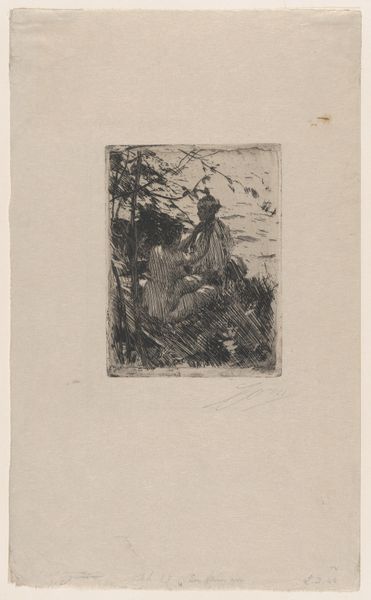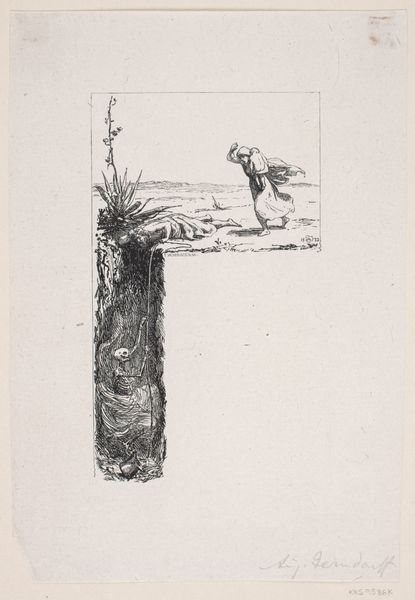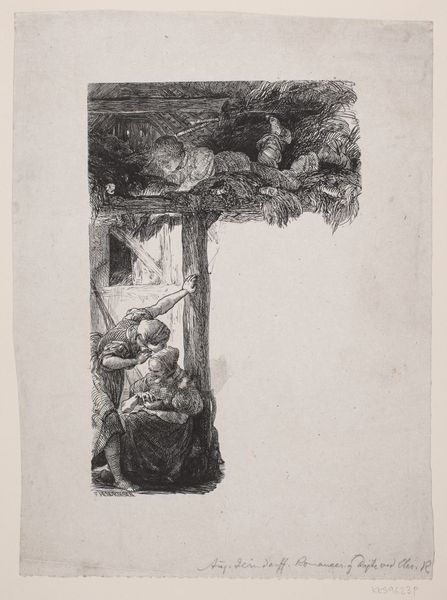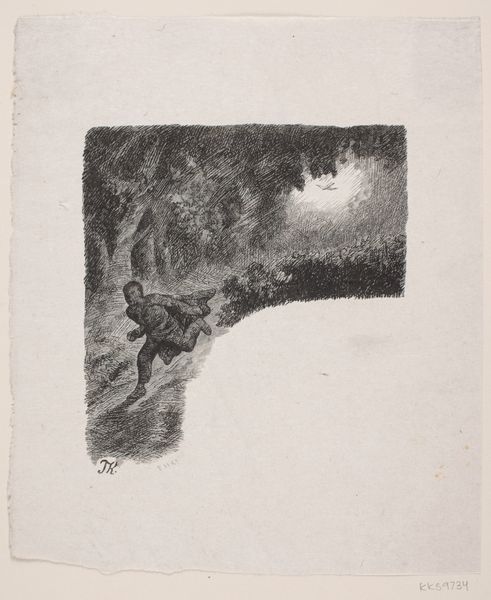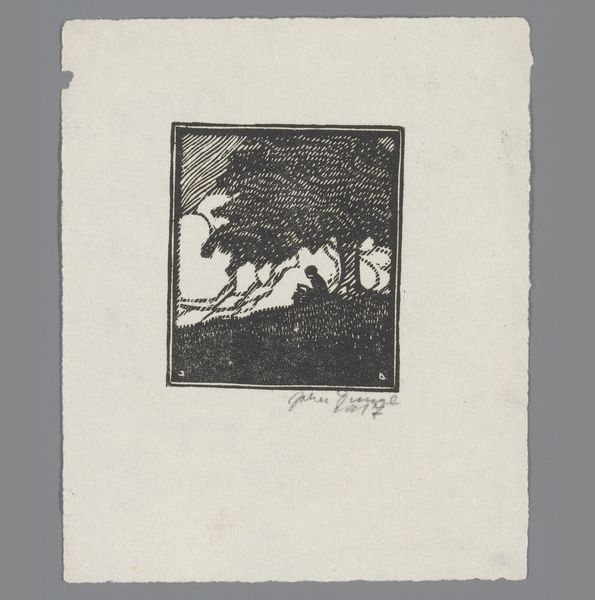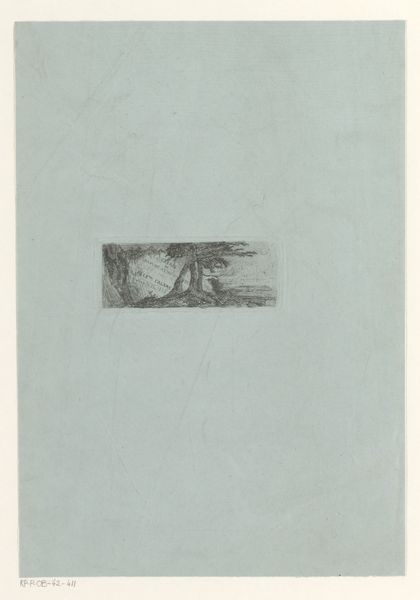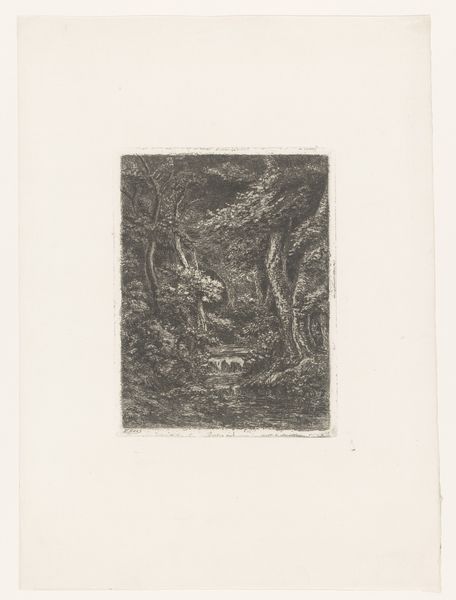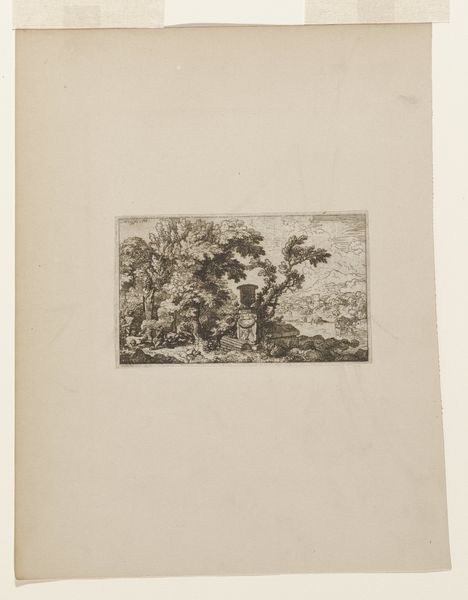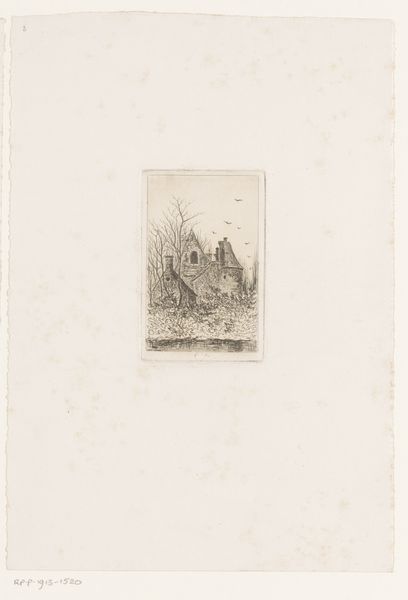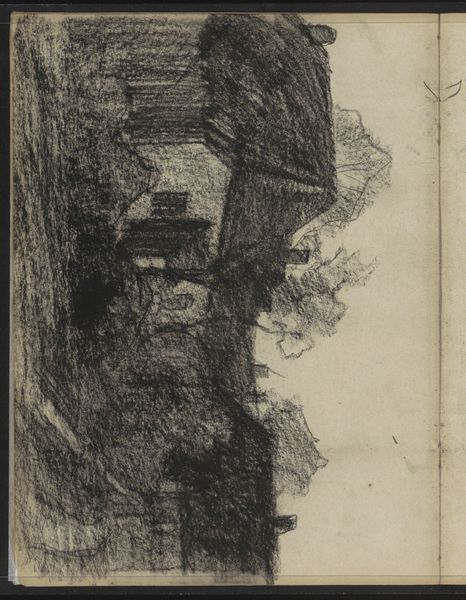
drawing, print, ink, engraving
#
drawing
# print
#
pen sketch
#
figuration
#
ink
#
line
#
engraving
Dimensions: 160 mm (height) x 120 mm (width) (bladmaal)
Curator: Here we have an intriguing piece entitled "Initialvignet. 'J' med en ørnerede" created sometime between 1882 and 1923. It's a drawing and print using ink and engraving. Editor: The mood is quite ominous, almost gothic. The stark lines and monochrome palette give it a weightiness despite its size. I'm struck by how this is a window into the lives and environments these birds create. Curator: Yes, and structurally, observe how the image is compartmentalized: a framed scene depicting eagles in their habitat merging with an ornate 'J' that becomes part of their world. It cleverly collapses foreground and background. Editor: Right. This piece, though small, reflects broader societal issues about encroaching on wildlife. Initial vignettes were, and still can be, more than simple aesthetic design choices. How are those initials related to nature’s decline or destruction in modern society? The initial is made of natural objects and a living scene with eagles nesting inside of its frame. Curator: The composition directs our gaze in a particular way. From the upper scene down along the letter’s frame, eventually, settling on a detail down below. We observe an engagement that moves beyond subject, medium and composition. Editor: The contrast is striking: the wildness of the eagle’s nest versus the controlled, ornamental design of the initial. Whose authority reigns over our environment, and under what structures are the animals being held? What does the intersection between the frame and letter, signify as well? Curator: Well, to your earlier point, these decorative initials often represented power and ownership in texts. The visual language suggests a forceful imposition onto nature, a capturing if you will of wildness for… domestic purposes? Editor: It feels as if our anonymous artist presents nature's world captured and put on display or at the mercy of human control within that ornamental J. Something seems tragic about the nest and how those new inhabitants will either perish, learn, or conform within those boundaries. It's a stark visual commentary. Curator: I appreciate you bringing this reading forth – It forces a look into how our reading of form also has social weight when looking at artwork. The graphic use of contrast allows one to have a deep interpretation about both design and ecological realities in modern history. Editor: Likewise! What started as just a simple decorative piece allows us to interpret design and social contexts that invite us to discuss authority, place and ecological concerns of ownership.
Comments
No comments
Be the first to comment and join the conversation on the ultimate creative platform.
